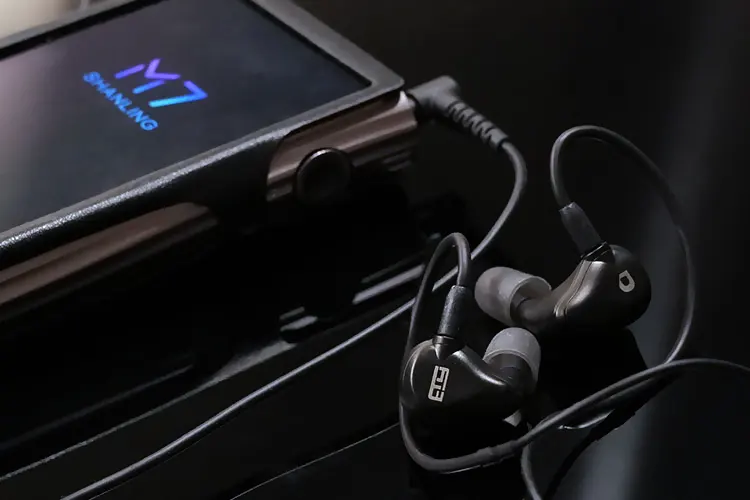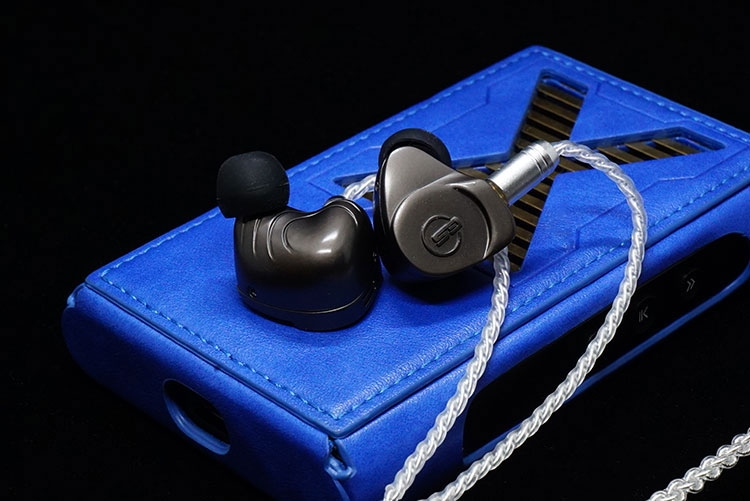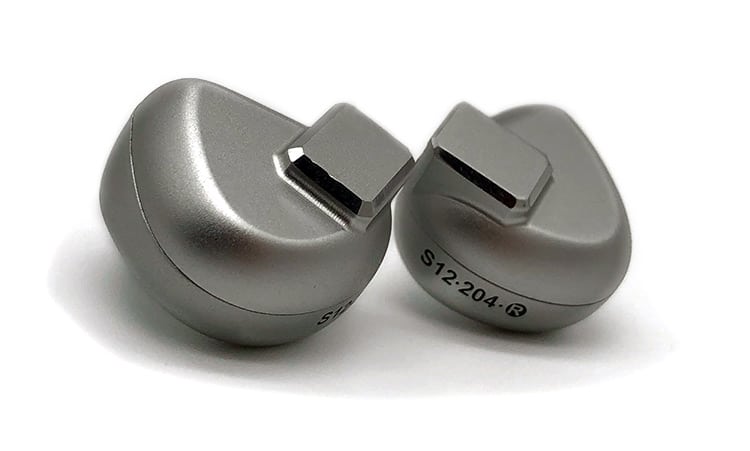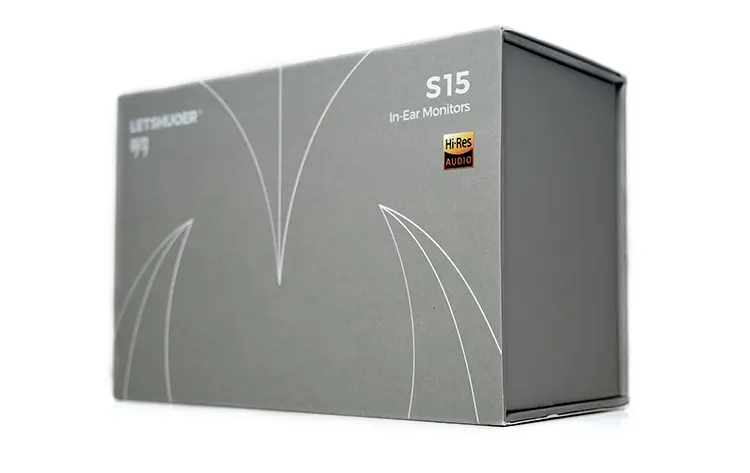Synergy
No matter what the jack used, the S15 functioned well with the sources. The Cayin N6ii was my favorite with the 3.5mm single-ended jack over the Shanling M6 Pro and the 4.4mm balanced jack.
Efficiency
With a sensitivity of 106 dB and an impedance of 30Ω, the discrepancy between sources was heard more than some we have tested of late. I had to noticeably turn the volume down on the Shanling with the 4.4mm balanced jack as opposed to the Cayin N6ii and the 3.5mm single-ended jack.
Regardless, the background was black, with no audible hiss between songs.
Pairings
I did find that the S15 worked well across many sources, and both DAPs I used were quite good when paired together.
The balanced jack I used on the Shanling helped counter its warmer, richer signature adding some vibrancy to the S15, which was appreciated. The organic nature of the pairing made me appreciate both the source and the IEM.
The Cayin N6ii is a very good, detailed DAP, and the single-ended jack provided me with an excellent sonic response, making a nice compliment to the warmer Shanling sound.
Vibrant? Yes, and a bit more clarity made this pairing ideal for music, which needs to be presented in a detailed manner.
Select Comparisons
Drop + Etymotic ERX
Technical
The Drop + Etymotic ERX is a single BA driver collaboration between Drop and Etymotic. Long known for detailed sound, and deep inserting nozzles, the Etymotic comes across with excellent detail.
The universal fit ERX IEM has a similar stainless steel housing design to the EVO which is created via injection molding and finished in a stealthier dark grey theme.
The single-BA driver design has a very good seal due to the extended nozzle, delivering an accurate and coherent performance across the frequency response.
Placing the sound closer to the eardrum makes for a quicker responding unit. Similar to the EVO, the ERX adopts the Estron T2 connector system that is sweatproof and of very good quality.
Design
The extended in-concha design (long nozzle) is identical to the heat-formed stainless-steel housing on the EVO, which is made from metal powder and resin; and pressurized into a few geometric parts. The aesthetics come across with an artistic flair as well as ergonomically pleasant to handle.
With a sleek, seamless design and a smooth-flowing curve, the absence of screws adds to its aesthetic appeal. The ETY logo is prominently displayed on the right faceplate and the Drop logo is on the other side with a subtle look to it.
The ERX utilizes the Estron T2 connector system and includes a lightweight stock cable that I found to be a pain to untangle.
Once untangled though, the cable laid properly, with minimal fuss. The design is slim yet durable, and the compact body size ensures a comfortable fit for any ear shape. It did still jut out beyond my ear, though.
Performance
The ERX goes back to Etymotic’s usual approach to offer coherent, highly accurate, and transparent sound with a single-driver design. There is a better-detailed response here than the S15.
The resolution is excellent thanks to the seal and longer nozzle. Also, Etymotic has done a good job muting any unwanted brightness. Here, the Etymotic is similar up top to the S15, but with better clarity.
The ERX can be characterized as having a mild V-shaped tuning with a slight emphasis on the upper register but less elevated in the upper mids.
Despite this, the presentation is uncolored and unexaggerated, with good clarity throughout the frequency range. Think of it this way: where the S15 elevates the midrange centrally, the Etymotic lifts either side of that, giving more of that V-shaped signature.
You could argue that it is a relaxed sound signature, particularly when paired with high-powered DAPs with higher gain, but also has a more vibrant signature.
The soundstage is more narrowly defined but with better spatial definition, due to the more detailed signature. The texture was sharper as well, with layers more clearly defined. This succinctness led to a slight thinning of the notes, but there was still a touch of organics.
If accuracy and clarity are your aim, the Etymotic finishes ahead of the S15.
Earsonics CORSA
Technical
The Earsonics CORSA is the easiest to drive here and comes fitted with three balanced armatures set in a stunning zinc/magnesium alloy shell.
With a sensitivity of 119 dB and an impedance of 31Ω, the CORSA is imminently easy to drive. There is a bit of hiss in the background, which is noticeable between songs.
Earsonics implements its own EVS (ergonomic versatile shell) and FUSION technologies in the crossover impedance corrector to align phases in the driver’s output, aiming at optimizing musicality.
The company worked hard to implement its interpretation, and when I talked to one of the PR people, we conversed about the trials and tribulations throughout the design/tuning process.
They mentioned that the housing has an acoustic chamber for tuning and electronic circuit designs, that minimize electrical phase problems which can hinder sound transmission (less isolating).
Design
The CORSA design is very close to the STARK we reviewed previously but with a different color. The new color adds a bit more warmth to the design, mimicking a good brew of coffee.
The design look is consistent with EarSonics’ other models (including the TOTL Grace Platinum), giving care to the small details like the packaging and accessories, complementing the IEM aesthetics as well as being practical enough to carry around.
The case is a bit small for such a heavy IEM, and I do worry a bit about that, but due to the flatter shape, it can easily fit into a pocket.
The cable while flat gorgeous has a tactility that is a royal pain. I found it tangled often (due to the small case in part), but once on laid perfectly. It was a minor quibble, but bothersome, nonetheless.
Performance
The signature of the CORSA is clean and emphasizes slightly more treble than the rest of the frequency response. There is a small recession in the lower mids, which further enhances vocal clarity.
Since it is an all-balanced armature unit, bass does not reach very deep; but has excellent detail and speed. Attack is faster than decay, which allows the lengthened notes to linger a bit, giving a false sense of depth. This does tend to help.
Details come across as clean, but there is also a smoothness, which seems to defy the all-BA design. Not quite as much clarity as the Etymotic to me, but more than the S15.
The sound presentation is on the more articulate side than punchy. Instead, the CORSA is a coherent, refined, and transparent-sounding IEM with the best looks of the ones listed here.
LETSHUOER S12 Review
Technical
Inside the S12 is LETSHOUER’s first custom pair of 14.8mm planar drivers capable of pushing a respectable frequency range of 20Hz up to 20kHz.
It is also efficient to drive and is about normal for planar IEMs, rated at 16Ω and 102dB SPL. While not requiring huge reserves of power it should scale pretty well with most modern DAPs.
Design
The 5-axis CNC milled aluminum alloy housing of the S12 comes with straightforward visual cues, accentuated by the rectangular overhang on the faceplate. The chamfered edges are mirror-finished but prone to scuff marks, with little use.
The extended 2-pin sockets improve the ergonomics associated with wearing the IEM. LETSHUOER developed this style of cable for the S12 to be less angled which helps reduce fatigue.
The S12 is a smaller piece of gear that can be taken out for a beating, even with the wear on the shell mentioned above.
Performance
Safe and tidy is how Aldous described the signature, adding, “that I didn’t think for one moment it is hiding a fun nature inside.
There is no sense of intensity in the low end even though it rises well above the midrange. What it comes to is the presence of a gentle giant that will be there when the note hits hard and tucks neatly away when unnecessary.”
On less complex songs, the texture and resolution are impressive but when the low end comes in, it does weaken the details pulling the bite on some instruments. What it does not limit is the vocal region letting it sing confidently in the mix.
That less-detailed signature hinders note development and texture, thinning the notes more so than the smooth character of the S15. Yes, the S15 is a step up or two, but the familial resemblance is there, just less so.
Our Verdict
Planar IEMs are becoming much more prevalent in the market, so it is a natural move to see them at different price levels. The S15 is no different and is one of the better planar IEMs I have heard to date.
Using the technology from the S12, LETSHUOER moved upscale a bit with the new 3rd generation driver inside the S15. And as such, it works.
You won’t get the most detail from the S15 because it isn’t tuned that way. Tuned for a smoother, more laid-back listen the S15 does quite well when this is the type of listen you want.
Bass rumbles a bit but carries into the midrange. Midrange provides excellent detail to make up for the lower end. Treble notes carry a smooth character, which is pleasant on my ears.
Pair all of this together, and you end up with a rich, smooth character that is certainly different than other IEMs tuning. A nice change of pace can overlook its moderate detail & clarity in signature if that is what you want for your listening pleasures.
LETSHUOER S15 Technical Specifications
- Driver Type: Third generation 14.8mm dual-chamber planar driver + 6mm passive filter module.
- Frequency Response: 20Hz – 40kHz.
- Sensitivity: 106 dB.
- Impedance: 30Ω
- Capsule material: 3D printed resin.
- Outer face material: Anodized aluminum alloy.
- Jack connector: interchangeable 2.5mm/3.5mm/4.4mm 90° angled.
- Capsule Connection Type: 2Pin 0.78mm.
- Cable: 1.2m 216 strands of silver-plated monocrystalline copper.






